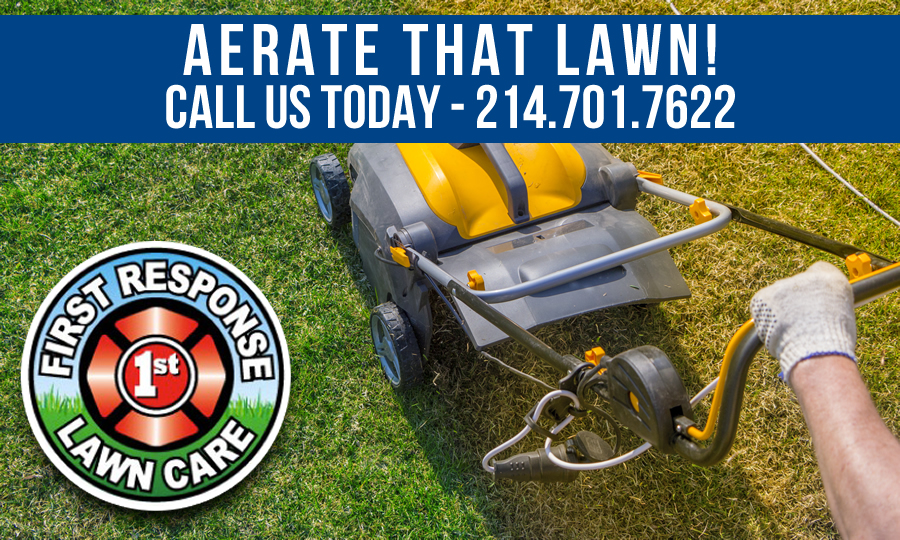Regular maintenance tasks go a long way in creating a thicker, healthier lawn. But jobs typically reserved for once a year can play a significant role in supporting smaller steps taken across the months. Aerating lawns to relieve soil compaction and enhance grass growth is a regular annual task. Almost any lawn can benefit from aeration when it’s timed well and done properly.
Why Aerating Helps Lawns
Grass roots need air, water and nutrients to grow thick, deep and strong. When soil becomes compacted, even slightly, it inhibits the flow of the essentials that support thicker, healthier turf growth. A layer of compacted soil just 1/4 to 1/2 inches thick can make a significant difference in the health and beauty of your lawn. Aeration creates holes down into the soil to alleviate compaction so air, water and nutrients can reach grass roots.
Deprived of their basic needs by compacted soil, lawn grasses struggle in stressful situations, such as heat and low rainfall, and lose their healthy, rich color. Grasses gradually thin and eventually die out completely, for lack of the oxygen, water and nutrients available just inches away. Even a single aeration session can open the avenue for these essentials to reach their mark and put your lawn back on an upward trend.
When Lawns Need Aeration
It may not seem your lawn could get compacted, but it happens easier than you may think. Outdoor entertaining or yard play by kids and pets can leave all or part of your lawn compacted. Parts of Texas have heavy clay soil and annual aeration is needed to keep your lawn from becoming thin and weak.
Dethatching and aerating are two different tasks, but they often go hand in hand. Thatch is the layer of decomposing organic matter that forms right at the lawn surface, between soil and grass. When thatch gets more than 1/2 inch thick, it works like compaction to prevent the flow of air, water and nutrients grasses need. Aggressive spreading grasses, such as Kentucky bluegrass in northern lawns and Bermudagrass down south, form more thatch than many other grass types. Aeration helps penetrate and reduce thatch buildup or prep it for removal through dethatching.
If your grass often looks stressed and your soil is hard to the touch or rainwater puddles up where it used to be absorbed, you may have compaction problems. Confirm your suspicions with a simple “screwdriver test.” Take a regular screwdriver and stick it into your lawn’s soil by hand. It should slide in fairly easily. If you meet resistance, your soil is compacted, and aeration can help.
After your lawn is aerated, let soil plugs or extra soil dry where they fall. They’ll break down in rain or crumble the next time you mow, adding beneficial soil and organic matter to your lawn surface.
By adding aeration to your annual task list, you help ensure your lawn can reach its full potential for thickness, health and beauty. First Response Lawn Care is committed to providing you with the finest in grass seed and lawn care products to help you achieve your lawn goals.

